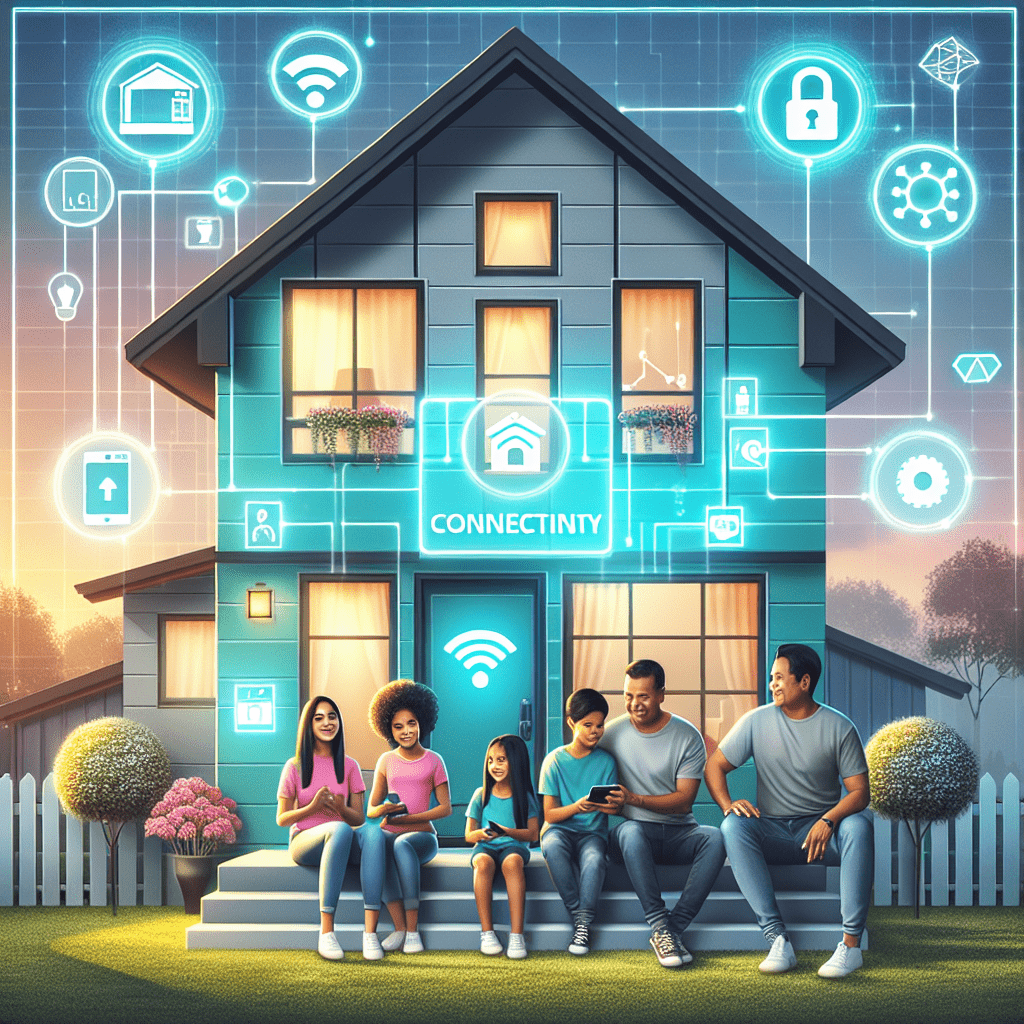In today’s digital age, the concept of a connected home has gained significant traction. A connected home refers to a setup where devices and appliances are connected to a central hub, allowing for seamless communication and control. From smart thermostats to security cameras, the possibilities of a connected home are vast. In this article, we will delve into the benefits and challenges of embracing a connected home lifestyle.
Benefits of a Connected Home
1. Convenience: One of the primary benefits of a connected home is the convenience it offers. With smart devices in place, you can control various aspects of your home, such as lighting, temperature, and security, from a single interface. This level of control can make daily tasks easier and more efficient.
2. Energy Efficiency: Connected home devices, such as smart thermostats and lighting systems, can help you save on energy costs. You can set schedules and automate processes to ensure that energy is not wasted when it is not needed. This can lead to significant savings on your utility bills over time.
3. Security: A connected home can also enhance the security of your property. With smart locks, cameras, and alarms, you can monitor your home remotely and receive alerts in case of any suspicious activity. This added layer of security can provide peace of mind, especially when you are away from home.
4. Integration: Another benefit of a connected home is the ability to integrate different devices and systems. This means that your smart thermostat can communicate with your smart lighting system to create a more comfortable and energy-efficient environment. The possibilities for integration are endless, allowing you to personalize your home to suit your preferences.
Challenges of a Connected Home
1. Cost: One of the main challenges of transitioning to a connected home is the cost involved. Smart devices and systems can be expensive, and the initial investment can be substantial. However, the long-term savings on energy costs and potential increase in property value may offset this initial cost over time.
2. Compatibility: Another challenge of a connected home is ensuring that all devices and systems are compatible with each other. Different brands and manufacturers may use different protocols and technologies, making it challenging to create a seamless ecosystem. Researching and planning ahead can help you avoid compatibility issues when setting up your connected home.
3. Security Risks: With the increased connectivity in a connected home comes the potential for security risks. Hackers can potentially access your home network and compromise your privacy and security. It is essential to take precautions, such as using strong passwords, updating firmware, and installing security software, to mitigate these risks.
4. Reliability: Like any technology, connected home devices are not immune to malfunctions and technical issues. A loss of internet connection or a software glitch can disrupt the functionality of your smart devices. It is crucial to have contingency plans in place and be prepared for potential downtime.
Conclusion
Embracing a connected home lifestyle can offer numerous benefits, such as convenience, energy efficiency, security, and integration. However, it also comes with its set of challenges, including cost, compatibility, security risks, and reliability. By weighing the pros and cons and taking steps to address potential issues, you can create a connected home that enhances your quality of life while minimizing risks.
FAQs
Q: What are some popular connected home devices?
A: Popular connected home devices include smart thermostats, smart lighting systems, security cameras, smart locks, and voice assistants.
Q: How can I ensure the security of my connected home?
A: To enhance the security of your connected home, use strong passwords, update firmware regularly, encrypt your network, and consider using a virtual private network (VPN) for added protection.
Q: Will a connected home increase my property value?
A: A connected home with energy-efficient features and smart technologies may increase the appeal and value of your property to potential buyers. It can also lead to savings on utility bills and insurance premiums.
TIP:
When setting up a connected home, start with a few key devices that align with your needs and budget. Gradually expand your connected home ecosystem to avoid overwhelming yourself and ensure a seamless transition to a connected lifestyle.
#Exploring #Benefits #Challenges #Connected #Home
